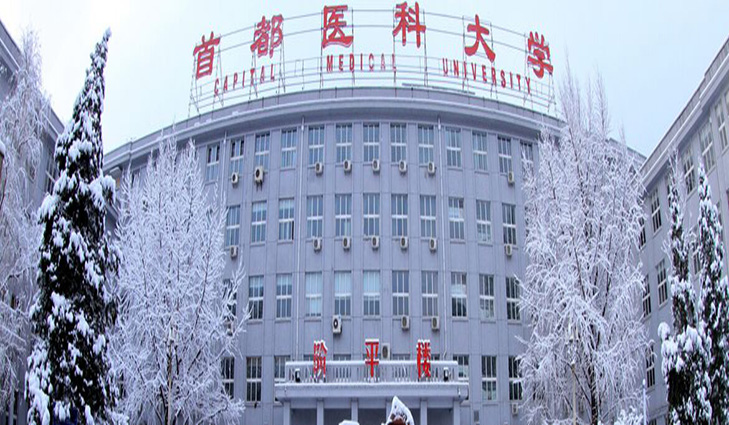Capital Medical University (CMU) formerly known as Beijing second medical college was founded in 1960. CMU is a well known academic institution for its strong capacity in scientific research. It ranks among the top academic medical institutions in China and is one of the key municipal universities in Beijing. Today, six members of teaching staff are members of these prestigious academies, enhancing the university’s domestic reputation further. CMU consists of 10 Schools, 14 affiliated hospitals and 1 teaching institution. The university has over 9,000 enrolled students. CMU provides a wide range of educational programs in English language. It hosts many key national and municipal disciplines, laboratories and exchange stations for post-doctoral research. High-caliber national and municipal research and training centers and institutes are founded here, covering a wide range of fields.
University has achieved national and international recognitions in many areas such as Neurobiology, Cytobiology, Immunology, Medical Iconography, Neurology, Neurosurgery, Cardiology, Cardiac-vascular Surgery, Kidney Transplantation, Respiratory Disease, Digestive Medicine, Oral-Maxillofacial Surgery, Ophthalmology, Otolaryngology and Pediatric Hematology, among others. CMU is made up of six campuses located throughout the capital. The Main Campus and the CCMU International Campus both are located in Fengtai District, whiles Shunyi Campus in Shunyi District, Wanshoulu Campus in Haidian District, Hepingli Campus in Dongcheng District, and Dongsishitiao Campus in Dongcheng District. International students study and live mainly on the CCMU International Campus.
University campuses are within easy reach by public transportation and it consists of Library, International and Local Restaurants, Student Dining Hall, Tennis Courts, Soccer Fields, Gymnasium, Indoor Basketball Courts, Outdoor Basketball Courts and Indoor Swimming Pool. CMU provides excellent international exchange programs. It has partnerships and agreements with many universities and institutions with more than 20 countries and regions, supporting activities such as faculty and student exchange programs, joint education and joint research projects.

Tuition Fees also can be paid on half yearly.
Fees structure:
| 1st Year | 2nd to 6th Year | Total Course fee (6 year) |
|---|---|---|
| 7800USD$ (5,46,000INR) | 4500USD$ (3,15,000INR) | 30,300USD$ (21,21,000INR) |
* we calculated 1$ = 70Rs.
- No Donation.
- No Entrance Exam.
- English Medium.
- WHO & MCI Recognized
- Low Cost of Living.
- Lower Tuition Fees.


